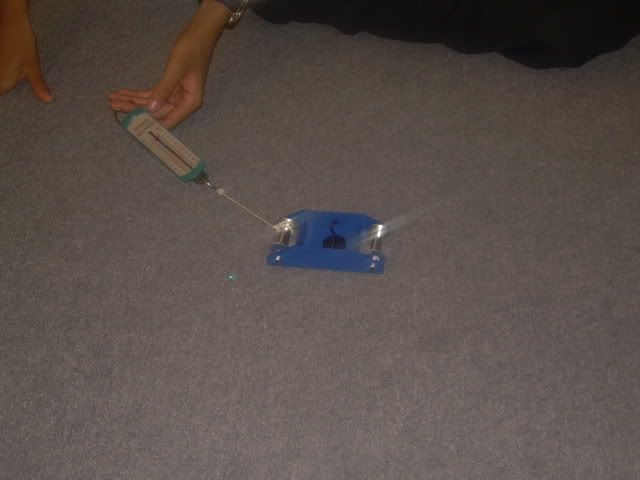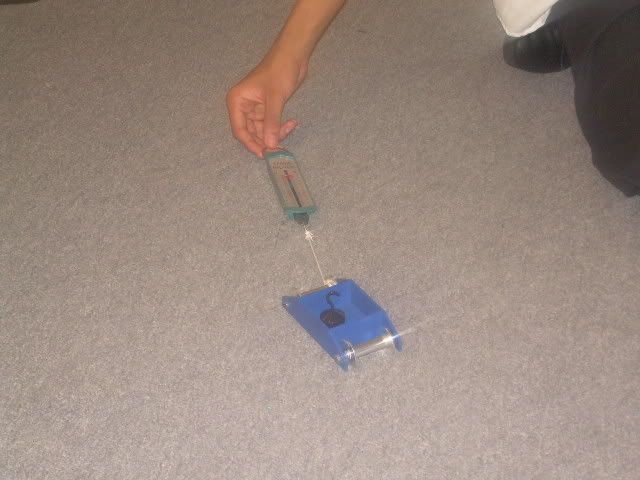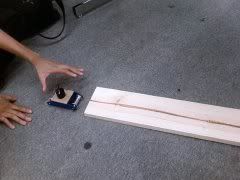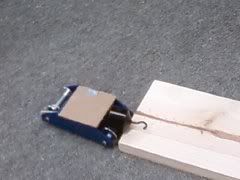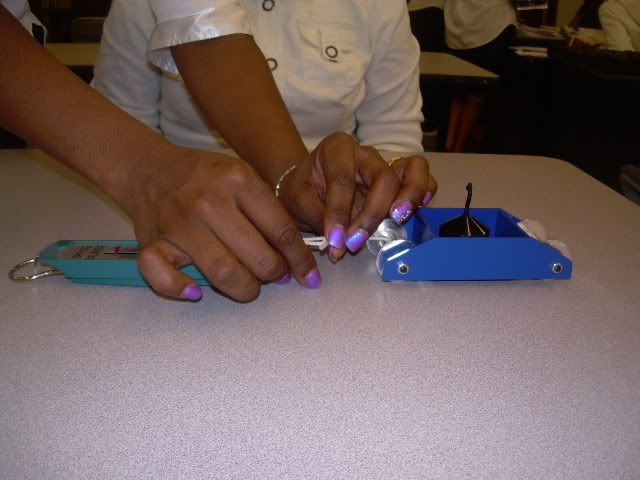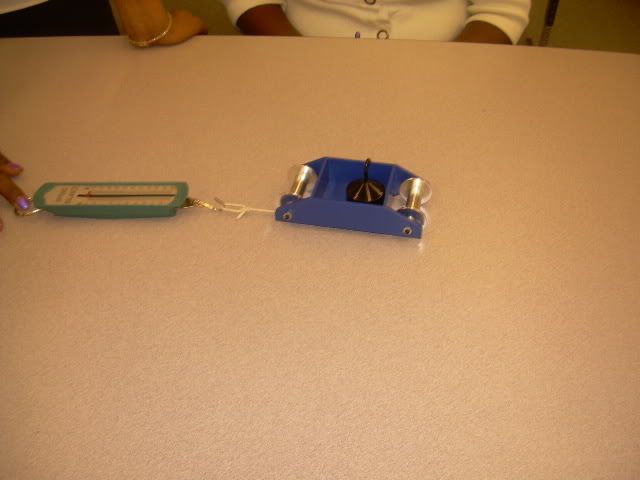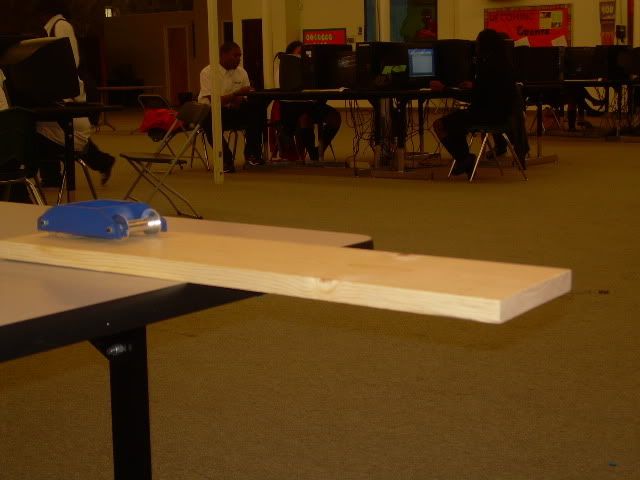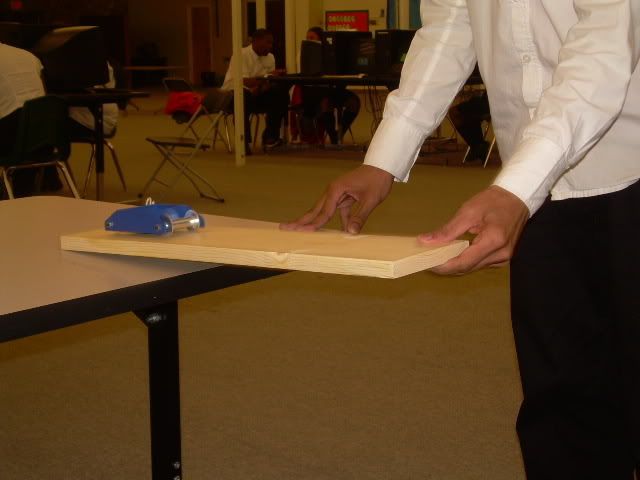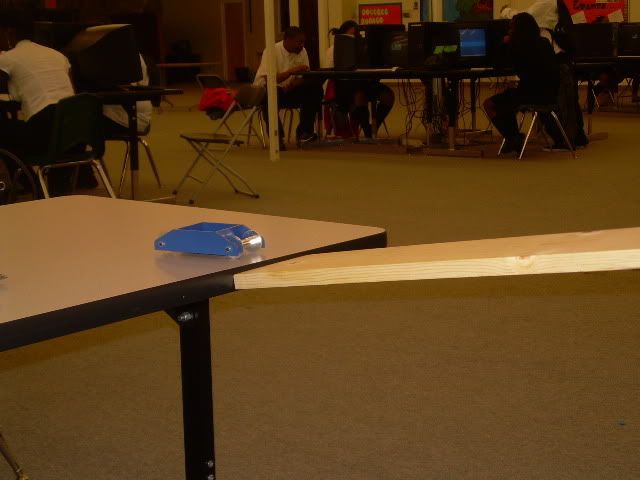Group Members:
Physicist Terrell Merrill
Physicist Victoria Brown
4-6-08
11-2
http://collegebounddanysha.blogspot.com/
Objective: To identify if there will be an equal opposite reaction when you use the rod as a sling shot.
Hypothesis: I think that the steel rod might fly at a fast speed which directs to some where. The cart might push back giving it a reaction from the steel rod.
Materials:
steel Rod
Hall’s Cart
paper clip
rubber band
Procedure:
1.)Find an open area on smooth floor or smooth surface as in table.
2.)Attach one end of the rubber band to the hole in the front of the cart with a piece of string or a paper clip. Hook one end of the steel rod into the other end of the cart.
3.)Pull the steel rod back in the slingshot until there is good tension on the rubber band. Then hold the cart and rod in place with one hand.
4.)Release both the cart and rod at the same time as you let go. Repeat several times, stretching the rubber band the same amount each time.
Trial 1: The cart stayed still, the steel rod went flying.
Trial 2: No Motion
Trial 3: The cart moved backwards and the steel rod moved in a forward direction.
Trial 4: No motion with the cart, but the steel rod moved forward (flying).
Trial 5: Cart moved forward direction, and the steel rod moved backwards.
Trial 6: Cart moved backwards, and steel rod moved faster than trial 1, 3 and 4.
Trial 7: Steel rod moved forward (fast) and rolled off the table.
The cart moved in the same direction as the rod but not onto the floor.
Equation:
F= m∙a
Graphs/ Pictures:


Conclusion: My hypothesis was correct, because the steel rod was flying away from the Hall’s Cart. Sometimes the cart moved but not with the same speed with the steel rod. The direction that the steel rod moved was forward. Sometimes the cart went backwards or forwards on the table. Plus, the slingshot follows Newton’s 3rd Law.



